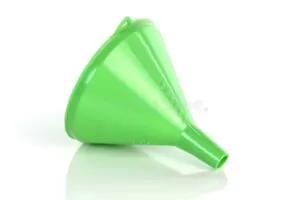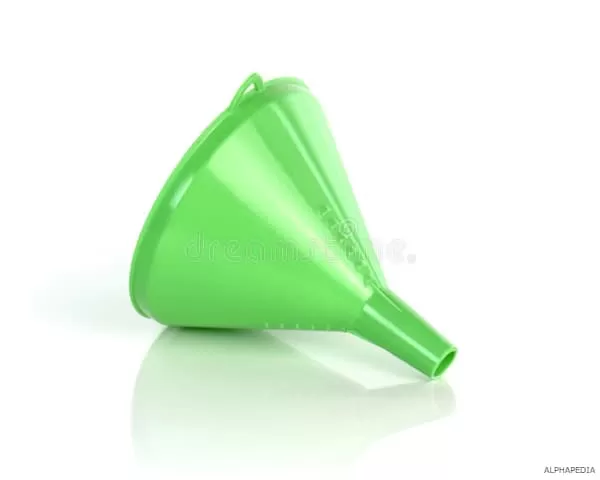Definition and Meaning of Laboratory Funnels
It is a hollow conical vessel with a tube of variable length coming from its apex, used to pour fluids from one vessel to another, in filtration and other tasks. Funnels can be used to avoid spills when pouring chemicals from one container to another, and can also be equipped with a filter to separate solids from liquids.
Separating funnels are also used for filtration and extraction, as they have a closed, bulb-shaped body equipped with a plug at the top to prevent spillage when the funnel is inverted. Together with a stopcock at the base of the nozzle, which can be used to gradually lower the internal pressure of the bulb.
Different Funnel Sizes
In the market we found great amount of sizes and material of funnels, for laboratory the sizes of funnel according to their type are:
- Funnel, 300 mm porcelain
- Funnel, 250 mm, porcelain
- Funnel, 200 mm, porcelain
- Funnel, 180 mm, porcelain
- Funnel, 150 mm, porcelain
- Funnel, 125 mm, porcelain
- Funnel, 110 mm, porcelain
- Funnel, 90 mm, porcelain
- Funnel, 80 mm, porcelain
- Funnel, 70 mm, porcelain
- Funnel, 50 mm, porcelain
- Funnel, 40 mm, porcelain
- Funnel, 30 mm, porcelain
- Funnel, 20 mm. porcelain
- Academic decanting funnel, Squibb shape, 250 ml capacity
- Academic decanting funnel, Squibb shape, 50 ml capacity
- Academic decanting funnel, Squibb shape, 250 ml capacity
- Academic Drip Funnel, Cylindrical, Capacity 100ml
- Academic Drip Funnel, Cylindrical, Capacity 50ml
- Academic Drip Funnel, Cylindrical, Capacity 25ml
- Academic Drip Funnel, Cylindrical, Capacity 50ml
- Academic filter funnel, simple, Capacity 150ml
- Academic filter funnel, single Capacity 120ml
- Academic filter funnel, simple, Capacity 100ml
- Academic filter funnel, simple, Capacity 75ml
- Academic filter funnel, simple, Capacity 70ml
- Academic filter funnel, simple, Capacity 55ml
- Academic filter funnel, simple, Capacity 50ml
- Academic filter funnel, single, Capacity 45 ml
- Funnel to filter academic, simple, Capacity 35ml.
Function of Laboratory Funnels
- Funnels are used to direct liquids into containers that have small openings.
- In scientific laboratories, funnels are sometimes used to filter materials, often with the addition of a sieve or filter paper.
- Cooks use funnels in the kitchen to transfer liquids, powders, herbs, or other items made of fine particles into containers with minimal spillage or waste.
- Special funnels are available for use in scientific laboratories. Some funnels contain stopcocks, which reduce the speed at which a fluid passes through a funnel.
- Some scientific funnels are designed to channel dust instead of fluids. Filter papers are often used to filter fine particles from the liquid being transferred.
- Scientific funnels can also be designed to separate two liquids flowing through the funnel together.
- Funnels used in the kitchen come in different sizes and shapes depending on their intended use.
- Narrow funnels are generally used to transfer liquids, while wide funnels are better for transferring dry foods such as flour.
- Funnels made of different materials are used to transfer different types of liquids. The funnel must be made of a substance that does not react with the liquid being transferred. Aluminum, glass, plastic, and stainless steel are often used to make funnels.
History and Origin of the Funnel
Filtration has long been a tedious process, and in the 1880s the search accelerated, especially for large-scale reactions. Increasing the pressure difference through the filter medium could be achieved in two ways. One was the filter press, by which the mother waters were literally squeezed by means of a horizontal or vertical piston, a method suitable for large-scale operations.
The alternative was to use a vacuum to suck out the solvent. As described earlier in this series, Otto Witt had developed the ‘Witt’, a perforated disc for sitting inside a funnel, which provides a stage for filter papers. Robert Hirsch soon developed an all-in-one version, perfect for small-scale filtration.
Ernst Wilhelm Büchner, published his design, a modification of Hirsch, but with vertical sides, which allowed him to handle a much larger volume solution. And this is known today as the Büchner funnel.
What is a Laboratory Funnel For?
The funnels according to their type are used for different materials, for example, the simple funnel is used to pour liquid into a beaker. The Buchner Funnel is used to separate solid substances from the solution. It can be made of ceramic or plastic.
The crucible funnel is used for filtering; the bottom of the frit is a porous glass surface, which allows the material to be trapped. The classifications correspond to the pore sizes. There is another type of funnel for filtering with filter paper. Dust funnel for pouring solids into a beaker or any container. A funnel with a wide mouth is used for solids and is called a dust funnel.
Use of Funnels
Use of the Filtration Funnel
- Fluff the filter paper if necessary. Fluffing is desirable when rapid filtration is required, such as in the filtration of the hot solution during recrystallization.
- Place filter paper in the funnel. Place the funnel directly above the beaker or in a ring holder above the beaker (see Figure 1 below).
- Please note that the filter paper is ribbed; however, this is not necessary for all applications.
- Wet the filter paper with a small amount of the liquid that is the solvent of the mixture being filtered.
- After the filtrate has been collected, pass a small amount of the washing liquid through the filter paper to wash away the residue.
Using the Buchner Funnel
- To use the funnel, choose a piece of filter paper that matches the size of the filter. Wet the paper (while in the funnel) with the predominant solvent in the solution to be filtered (water, alcohol, mixed solvents, etc.), pouring out any excess.
- Place the funnel firmly on the flask of the filtro. Adjust the airflow while sampling the “pull” at the connector site on the aspirator. After the adjustment is satisfactory, plug the flask connector into the aspirator.
- Always plug it in after adjusting the airflow. Pour the mixture to be filtered into the funnel, taking care that the pouring does not physically displace the paper in the funnel.
- Shake the container with the liquid/solid mixture to keep the solids suspended in the liquid when ready to pour. After filtration is complete (no more liquid coming out of the bottom nozzle of the funnel), turn off the air.
- If the filtrate is to be stored, it is ready to be poured into a suitable container. If the precipitate is to be saved, it will usually be rinsed out. The rinse is added with the connector unplugged.
- After adding the rinse, the connector is plugged in. After the rinse has flowed through the pellet, the air is turned off and the pellet is removed from the funnel.
- To do this with plastic funnels, remove the removable top of the funnel body.
- Tapping the funnel upside down against a piece of paper on the table will usually dislodge the precipitate and filter paper from the funnel.
- Alternatively, the tip of the scapula can be used to remove the filter paper from the funnel.
- After use, remove the vacuum hose from the flask. Clean the filter and flask, if necessary with a brush. Keep the vacuum cleaner assembled with its tube.
Use of the Separating Funnel
- The liquid mixture is placed inside the separating funnel and a container is placed underneath.
- The liquid with the lowest density floats on top. When the tap is opened, the liquid with the highest density begins to flow through the separating funnel into the container.
- The tap is closed just before the liquid with the lowest density starts to flow.
- The liquid with the lower density remaining in the separating funnel can be drained into a different container to separate the two liquids. Liquids that dissolve into each other
- It can be separated by fractional distillation.
Laboratory Funnels Price in Euros and Dollars
- 500 ml Straight funnel with drip tip, 24/29 joint, passageway glass (laboratory glass): Price: 27,81
- UKCOCO 40mm Glass Funnel – Laboratory Funnel Analytical Chemistry Feed Funnel Triangular Funnel High Temperature Resistant Tool: Price: 2.99
- CUHAWUDBA 2 Pieces 60 ml 2 5/9″ Mouth Day Lab Clear Plastic Filter Funnel: Price: 1.53
Types of Funnels
Buchner funnel
The removal of the unwanted solid from the liquid is the basic function of a Büchner funnel. The mixture of liquid and solid is passed through the filter, which also has a piece of filter paper in the funnel, which acts as a filtering agent. It blocks the solid particles and the residues are passed into the collecting flask. These funnels are made of a variety of materials such as porcelain, plastic or glass. Although porcelain sets are primarily used, other sets made of plastic or glass are also used.
Configuration: In a typical Büchner funnel, there is a glass Büchner flask that is placed on a flat table. At the top of the flask there is another container with a modest hole in the bottom. This secondary container is placed on top of the flask gently. The perforated hole faces downwards. In this elementary configuration of the appliance, the most important aspect is the piece of filter paper. It is placed in the funnel, so that the solids are separated from the fluid. In the side hole there is another vacuum component that sucks the air present in the flask.
Process: when a mixture is poured into the upper container, due to the filter paper placed there, all the solid particles adhere to the filter paper, and the liquid flows freely through the filter paper into the flask placed below. The following rules must be followed before using a Büchner funnel:
- The filter paper must be moistened with a solvent before use. This is to avoid initial leakage.
- The casting fluid to be filtered into another container is forced through a vacuum suction.
- Also note that the solvent should not exceed the required condition, otherwise the extra would also be absorbed by the vacuum suction.
Uses of a Büchner Vital funnel in the field of organic chemistry, this funnel is mainly used to collect recrystallized compounds in the whole process. The vacuum suction dries the compounds from wet crystals, so that the dry ones are left behind. In addition, its use is often combined with sinter seals, a Büchner ring and a flask. All these components are quite essential during the filtration process.
The other uses are:
- In liquefied table gases: cryogenic vacuum flask
- In the phase separation of plants and their components: filtration plants
- In filter fabrics: industrial filters
- In economical, cold, long-lasting and robust pumps: portable vacuum pumps
- In gas distillation and extraction units: Sigma process plants
- In vacuum systems with steam jet ejector: steam jet ejectors.
Glass Funnel
Glass funnels are pipes with a wide mouth and a smaller end that are generally used in laboratory environments. Common sizes are from 40 millimeters to 100 millimeters, with different lengths. The narrow bottoms of the funnels allow liquids to be added to chemical mixtures at a slow rate. Some funnels are used with filter paper to filter fine particles from a liquid.
Glass is typically used in funnels for laboratory use instead of metal or plastic because it does not react with chemicals. Solvents can deteriorate plastic or metal funnels. Beginning in 2014, laboratory glass funnels can be purchased at specialty laboratory stores as well as at general retailers, including eBay and Amazon.
Filter Funnel
A filter funnel is a funnel, often made of glass or porcelain, that contains an apparatus to separate solids from liquids. Buchner funnels are a type of filter funnel, but filter funnels can also be formed from common funnels by inserting filter paper between the funnel and the receptacle. Filter funnels work by trapping large solid particles and allowing smaller liquid particles to pass through unobstructed. They are widely used in chemical laboratories, auto repair shops, and illegal narcotics operations.
Some U.S. states restrict the sale of glass filter funnels because of their potential use in the manufacture of drugs. Steel filter funnels are a common part of automotive workshop and garage equipment used to remove debris from oil, fuel and coolant. These metal funnels use brass or plastic filters that can be reused over and over again. Glass filter funnels generally use disposable paper as a filter.
Separating Funnel
Also called colloquial funnel, it is a laboratory glassware used in liquid-to-liquid extraction to disperse components of the liquid mixture into 2 immiscible solvents of different thickness, such as oil and water.
Decanting Funnel
Addition funnels are used in the laboratory to allow the slow and controlled addition of reagent solution to a reaction. Funnels provide the ability to control the temperature, speed, and range of reactions. These funnels are typically cylindrical and are available with or without graduation marks to facilitate measurement.
Some funnels have a pressure compensating arm and plugs that disconnect from the funnel, leaving fluids isolated and unexposed. Funnels have ground outer seals, allowing them to fit securely into reaction flasks, and their protected drip stems do not extend beyond a standard tapered seal. A stopcock at the base of an addition funnel allows the transfer of a solution.
Weighing Funnels
Glass and plastic weighing funnels, available in a wide range of sizes for general and laboratory analytical needs, are used for weighing and conveying powders. Weighing funnels have a flat side for stability, ensuring that the funnel does not slip off the weighing pan. The weighing funnels are designed to fit into flasks, tubes or any narrow neck apparatus, ensuring complete transfer of the sample.
The weighing funnels are made of anti-static polypropylene and are shock and break-resistant. However, borosilicate glass weighing funnels are reusable and safe for handling hazardous materials.
Filling Funnels
The filling funnels are characterized by their short and wide stem, which is excellent for filling bottles or transferring powders. The funnels usually have a 60-degree angle that allows precise adjustment of the filter paper, as well as vents or flutes that decrease filtering time.
Glass filler funnels include a strong beaded edge that resists chipping, while the strong structure of glass filler funnels allows for the use of various reagents and chemicals. Typically constructed of borosilicate glass, funnels have high resistance to thermal and mechanical shock, as well as chemical attack.
Separating Funnel
Also called colloquial funnel, it is a laboratory glassware used in liquid-to-liquid extraction to disperse components of the liquid mixture into 2 immiscible solvents of different thickness, such as oil and water.
Decanting Funnel
Addition funnels are used in the laboratory to allow the slow and controlled addition of reagent solution to a reaction. Funnels provide the ability to control the temperature, speed, and range of reactions. These funnels are typically cylindrical and are available with or without graduation marks to facilitate measurement.
Some funnels have a pressure compensating arm and plugs that disconnect from the funnel, leaving fluids isolated and unexposed. Funnels have ground outer seals, allowing them to fit securely into reaction flasks, and their protected drip stems do not extend beyond a standard tapered seal. A stopcock at the base of an addition funnel allows the transfer of a solution.
Weighing Funnels
Glass and plastic weighing funnels, available in a wide range of sizes for general and laboratory analytical needs, are used for weighing and conveying powders. Weighing funnels have a flat side for stability, ensuring that the funnel does not slip off the weighing pan. The weighing funnels are designed to fit into flasks, tubes or any narrow neck apparatus, ensuring complete transfer of the sample.
The weighing funnels are made of anti-static polypropylene and are shock and break-resistant. However, borosilicate glass weighing funnels are reusable and safe for handling hazardous materials.
Filling Funnels
The filling funnels are characterized by their short and wide stem, which is excellent for filling bottles or transferring powders. The funnels usually have a 60-degree angle that allows precise adjustment of the filter paper, as well as vents or flutes that decrease filtering time. Glass filler funnels include a strong beaded edge that resists chipping, while the strong structure of glass filler funnels allows for the use of various reagents and chemicals. Typically constructed of borosilicate glass, funnels have high resistance to thermal and mechanical shock, as well as chemical attack.
Thistle Tube Funnels
Thistle tube funnels, available with or without taps, feature a long tube ending in a tank bulb with a flared edge. These funnels allow the insertion of small volumes of liquid in an exact position into an existing system or device. Thistle tubes are specifically designed to fit into Erlenmeyer and other flasks, making it easy to add new materials to burettes and narrow neck vessels. Available in glass or plastic, the funnels on the thistle tubes minimize the risk of the reaction occurring too quickly and overflowing.
Separating Funnels
A separating funnel is a glass funnel with a tap at the bottom. A separating funnel is a separation technique used for two liquids that do not dissolve into each other. Liquids that do not dissolve into each other are called immiscible.
Plastic Funnels
Plastic funnels are a safer alternative to glass. They will not break, chip or shatter amidst the bustle and shock of daily laboratory work, and they will not dent or corrode like metal funnels. They are lightweight and easy to handle. Aare manufactured from the highest quality laboratory grade polypropylene copolymer (PPCO), high density polyethylene (HDPE), low density polyethylene (LDPE) and polypropylene (PP) for low reliability and compatibility with a wide range of laboratory materials with so many sizes and styles, there are plastic funnels for a wide variety of laboratory applications.
Decanting Funnels
A beverage utensil used to aerate and filter liquids, such as wine, as it is poured into a carafe. There are a variety of different types available that are made with a wide mouth so that pouring and aeration is easier and more effective as the wine spins and is aerated when poured through the funnel.
Often, a screen insert is also included with the funnel that is used to filter out sediment and any residue, such as cork, contained in the wine. Decanting is a procedure that improves the taste and aroma of the wine, as well as clarity and color.
Filter Funnels
Filter funnels help to collect solid compounds present in liquids. Poured liquids travel by vacuum suction through fritted discs or perforated plates to exit the long angled stems. Common Hirsh or Buchner styles with ribs prevent air blockage and make operation faster. Chemical and temperature resistance allows for ribbed filter funnels to accommodate aggressive materials and repetitive sterilization procedures. Models vary in capacity, porosity and filter paper sizes.
Analytical Funnel
These analytical funnels are perfect for use in analytical chemistry applications. The funnels have long, narrow stems, making them ideal for use with liquids. Analytical funnels have internal and external ribs that help prevent air blockage. They are angled at exactly 60° for rapid filtration. Available in 9 different sizes, these analytical funnels fit standard filter paper sizes and are approved for use with food products.
Other Laboratory Materials and Instruments in ALPHAPEDIA
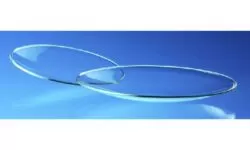
WATCH GLASS USE
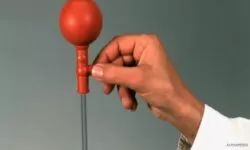
TYPES OF PROPIPETTE

GRAMS SCALE: What Is It For ? Models and Brands
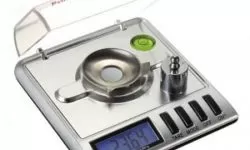
PRECISION BALANCE: Definition, Use and Types
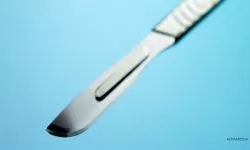
SCALPEL DEFINITION
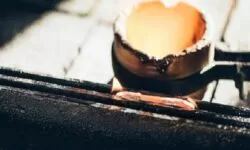
CRUCIBLE MEANING
Other Topics of Interest in ALPHAPEDIA

FREE OENOLOGY COURSE

NORSE GODS: Names, Meaning, Powers and History

IVORY COLOR: Meaning, Psychology and Types

HOTEL MANAGEMENT DEGREE

FREE MASTER DEGREE IN INFORMATION SYSTEMS

FREE DOCTORATE IN BIOETHICS
Image and Drawing of Funnel
